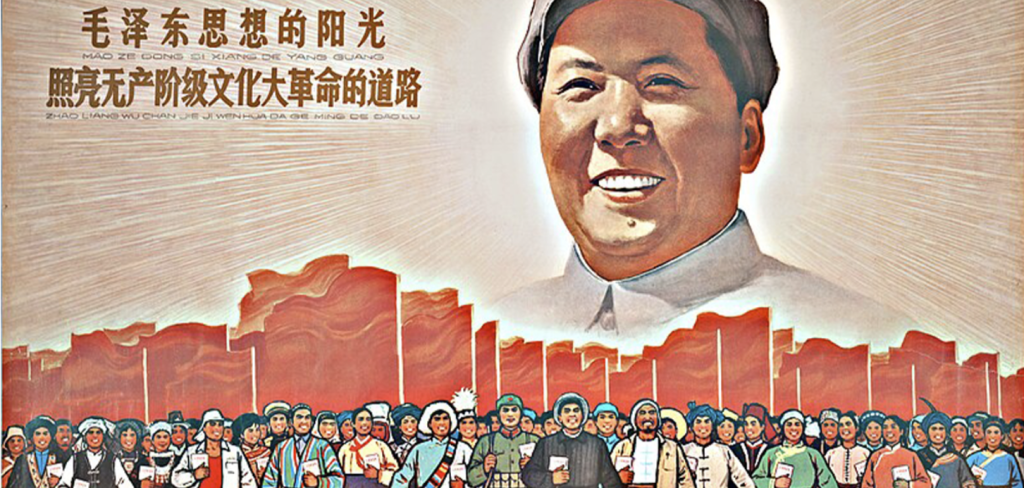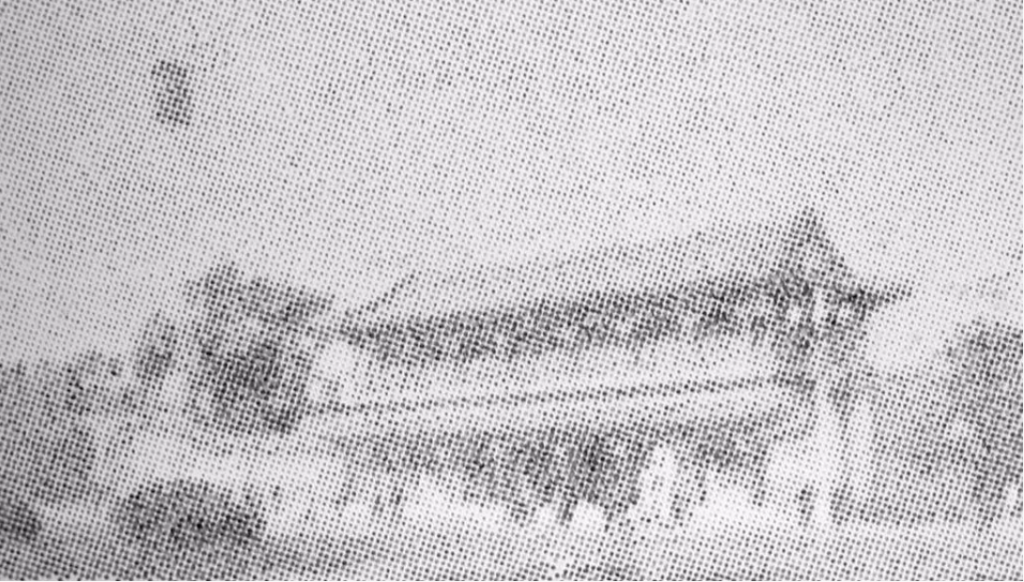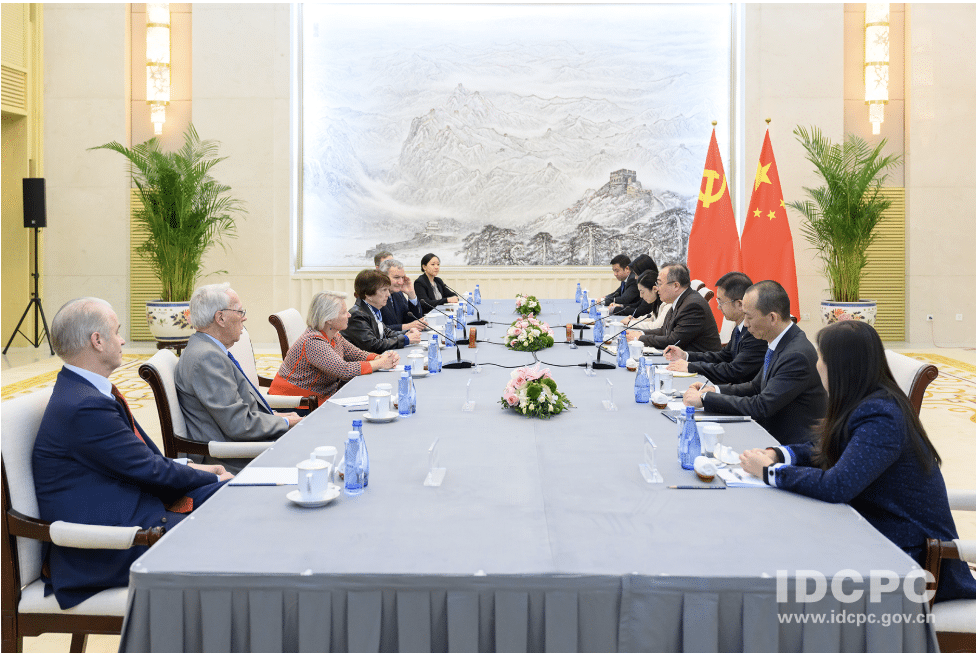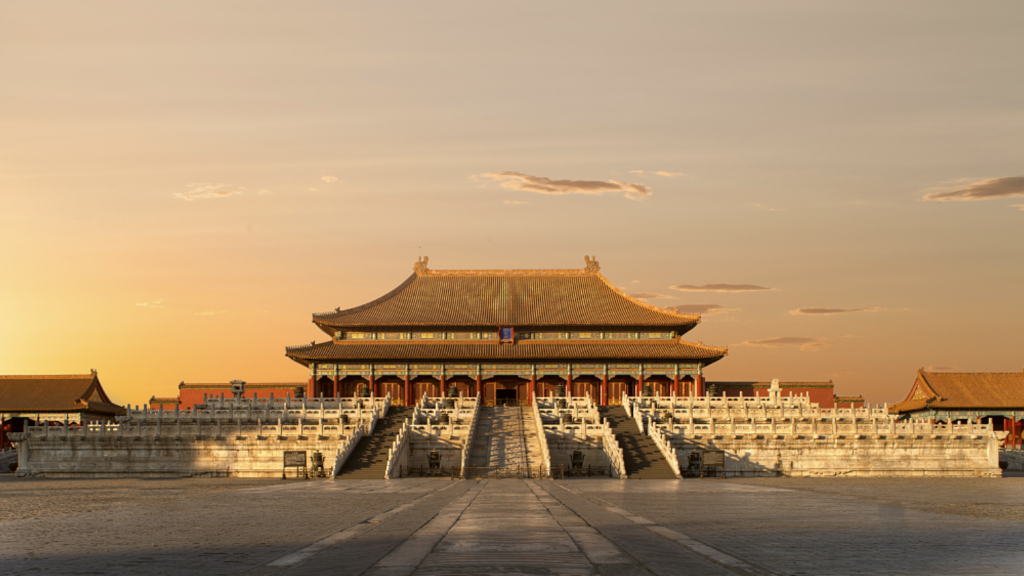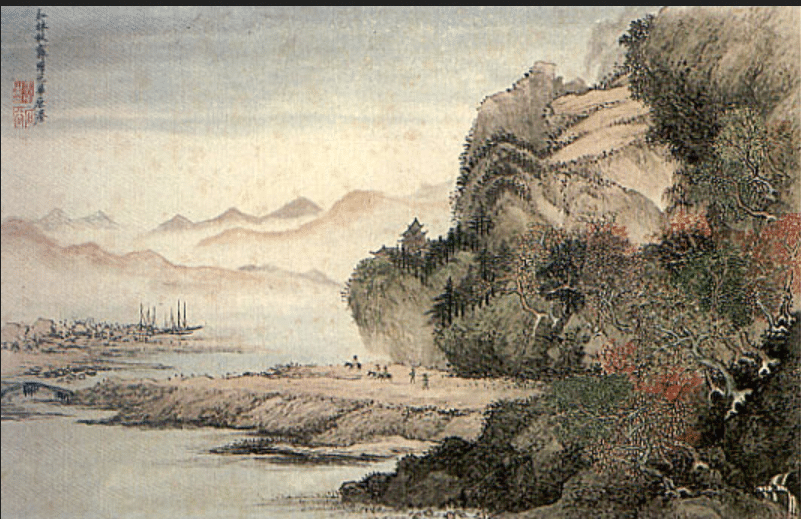An Interview with Sarah Mellors Rodriguez: Reproductive Realities in China
- Interviews
 Yingyi Tan
Yingyi Tan  Miranda Wilson
Miranda Wilson- 02/14/2024
- 0
Sarah Mellors Rodriguez (莫诗嫣) is Associate Professor of East Asian History at Missouri State University. She obtained her PhD in History from University of California, Irvine in 2018. Her research interest lies in the history of medicine, gender and sexuality, and reproductive policies in China. Her new book, Reproductive Realities in Modern China: Birth Control and Abortion, 1911-2021 (Cambridge University Press, 2023) thoroughly examines continuities and shifts in China’s politics of reproduction through a broad timeframe. Building on a rich archival base and records, Dr. Rodriguez also adds a “grassroots perspective” to her study, with oral histories of 80 Chinese individuals from three Chinese cities.
Below is the edited transcript from our interview with Dr. Rodriguez about Reproductive Realities and issues on abortion, birth control, and gender equality.
—
What inspired you to write this book? Why were you interested in the question of abortion and women’s rights in China?
I started becoming interested in this topic around 2009, right after I graduated from college and became a foreign language teacher in Guangdong Province in China. I had heard that the One Child Policy was in effect, but the students in my classes kept telling me, “Oh, I have so many siblings. This is commonplace where we live.” That conflicted with what I had heard about the One Child Policy. So, that got me interested in regional variations in policy implementation in China.
After that, I moved to Nanjing to work at a military university, Nanjing University of Aeronautics and Astronautics. I was tasked with teaching history to undergraduates, graduate students, and faculty members. When I became closer with the faculty members, they confided in me that they had had multiple abortions under the One Child Policy. If they had refused to undergo abortions, they would have lost their jobs. It was very emotional. We also talked about access to sex education and how that varies significantly in the U.S. as well as in China. So that got me interested in all these types of questions about reproduction and regional variation. After that, I ended up doing human rights research for the U.S. government. At that time, the legislative and executive branches collaboratively supported research on reproductive justice in China.
After that, I went to graduate school. I considered researching the One Child Policy, but I wanted to do so from a historical perspective. I wanted to move away from this top-down, policy-focused analysis of what I see as a very human thing: reproduction. That’s what got me interested in trying to see what came before the One Child Policy, and what that looked like at the individual or grassroots level.
How do you think Americans perceive abortion rights and women’s rights as a whole in China?
My sense, and I may be wrong, is that Americans think that the One Child Policy is just another example of how women have been continually oppressed throughout Chinese history. And while this claim certainly has some merit, this perspective also denies Chinese women’s agency.
What many Americans don’t realize is that the Communists were actually renegades. They were some of the first people in the modern era to promote gender equality, not just women’s rights, but gender equality as a basic political premise. The Soviet Union legalized abortion in the 1920s, and China legalized abortion 20 years before the United States did. If abortion access represents the paragon of liberal feminism, then maybe China initially was closer to achieving that goal than the U.S.
Your book covers the timeframe from 1911 to 2021. Could you talk more about this specific choice? How did Chinese policies toward birth control during this period shift, and what are some of the most influential factors you found in your research?
It was a significant choice to try to cover such a long period of time. Most existing studies of reproduction in China either focus on the pre-1949 period or the post-1949 period. My goal was to try to bridge that gap. I think the upside is that I was able to uncover some interesting historical continuities that I wouldn’t have been able to identify otherwise. There’s a through line, for example, that can be drawn from conversations happening in China in the 1920s and ’30s to what was happening under the One Child Policy: linking reproduction to eugenics and nation building. The thought was that, if you can control reproduction, you can control the “quality” of the population, and in theory, that will make the country stronger. The types of debates surrounding reproduction that occurred in the 1920s and ’30s directly parallel the debates happening today. The downside to writing a 250-page book about a 110-year period is that a lot gets lost. But my hope is that the benefits of being able to chart these long-term continuities and disjunctures outweigh the cons of not being able to have that deeper, more granular history.
Could you elaborate on those important continuities and shifts in China’s reproductive policy?
One of the important continuities I noted was, for example, related to eugenics. Eugenics is this idea that the human gene pool can be improved by reducing births among “inferior” people and promoting births among “superior” groups. As much as it’s an uncomfortable topic to talk about today, eugenics was a global phenomenon in the late 19th and early 20th century. Chinese elites were very much a part of that conversation, although they had varied takes on birth control, abortion, and coercive reproductive policies.
In the 1980s (as today), the Chinese government’s propaganda in birth planning clinics looked almost identical to the rhetoric from the 1920s and ‘30s. The message was, “If you have a health problem, do what’s best for the nation and don’t reproduce,” which is overtly eugenic. There were eugenic laws in place. Even through the Mao era, it was illegal for people with hereditary illnesses to get married or have children, because it was believed they would pass those things on to their children, which would ultimately be bad for the country. It was interesting, yet disheartening, to learn that those kinds of ideas have continued to be important across a hundred-year period.
In comparison, in the West, since the Holocaust, most people would argue that eugenics is bad. We know that eugenic ideas are never far off, but people don’t openly admit to supporting them. The overtness of eugenic terms and logic in Chinese medicine and propaganda was something that really surprised me.
Another continuity I noted involves abortion. One of the central arguments of my book is that historically the Chinese state left women with no other choice but to use abortion as a primary form of family planning. Unsystematic premarital sex education, contradictory population policies, and limited access to prophylactics paved the way for unmarried youth to become reliant on abortion. That’s not to say that abortion is bad, but I don’t know if it should be the go-to method of family planning in most people’s lives.
As for discontinuities, it’s hard to imagine that just a few decades before the One Child Policy’s implementation with its forced abortions and sterilizations, those same procedures were illegal or viewed as politically suspect.

Why do you think the One Child Policy managed to last so long despite scientists claiming it would hurt China in the long run? What does it say about the CCP’s decision making? What are the future implications of China’s aging labor force?
Thinking about decision-making during the period in which the One Child Policy emerged, there’s a critical overlap between science and politics. Medical anthropology and the history of medicine remind us to question the idea that science is politically neutral. Going to the doctor is always going to be influenced by the current political climate, the organizations or individuals funding medical research, and so on. The people who came up with the One Child Policy were missile scientists, not demographers. The only reason their idea gained traction is because they were in a politically and ideologically superior position in the minds of government officials at that time. In short, their questionable demographic calculus became the basis for national law under the One Child Policy.
If you look back to the 1920s and 1970s, there were already many different people questioning the need for such draconian population policies. But, ultimately, those voices were pushed to the side. Those critics actually anticipated the problems China is experiencing today regarding an imbalanced demographic structure, a skewed sex ratio, etc. In the 1980s and ‘90s, it became clear that those critics were correct, and yet the government simply held fast. It’s a product of a limited public sphere in which critical voices are rarely heeded.
With the rollback of the One Child Policy, some scholars predict that there will not be such an aggressive, brutal push to make women have more babies now that China’s demographic trends are switching course. In 2021, the State Council proposed limiting access to abortion nationwide, and there was a huge pushback. That proposal was never implemented on the national level, which I think means there is some amount of listening happening in the upper tiers of the government. Whatever the future brings, I do believe that the kinds of coercive policies used in the past wouldn’t have the same impact today because attitudes toward childbearing are shifting. However, as a historian, I am always reluctant to try to predict the future.
Despite the state’s active promotion of the second-child, even third-child policy, China recorded its first population drop in six decades in 2022, and again in 2023. What does this reflect about China’s current biopolitical control and gender equality?
In my book, I talk about how modern states want to believe that they have some degree of control over their populations, even if they don’t admit it. The Chinese government is just more explicit about its goals. My research demonstrates that, at the grassroots level, the government has long struggled to implement local fertility policies, whether pro- or anti-natalist. In the future, mass criticism of new population policies might also force Chinese government officials to be more cautious.
On women’s rights, most women would say they don’t want to have additional children because they don’t have the support they need: there’s limited access to childcare, education is very expensive, women are still largely responsible for tasks within the home, and women face hiring discrimination in the workplace on the basis that they might have children. Those are the primary reasons why women are not having more children. The obvious solution would be to offer more generous maternity leave, to provide paternity leave, and to allow LGBTQ families and single mothers to have children (because right now neither group has the same childbearing rights as married mothers in heterosexual relationships).
Some provinces in China have been more progressive in this realm. They are now granting extended paid maternity and paternity leave and giving healthcare and education subsidies to families. This mitigates some of the challenges of having more children, but unless these reforms occur on a national scale, not all parents will be impacted equally. Even if these benefits are granted on paper, I don’t know if they would actually be implemented at the local level. Women seem to, by default, bear the burden of childbearing and child-rearing, and without extensive structural changes, I don’t anticipate the goal of increasing birth rates being achieved.
In America, there’s a general anxiety among the younger generation that people don’t want to have children because they’re worried about things like climate change. There’s an atmosphere of existentialism. Are you sensing similar anxieties among people in China?
Anecdotally, I know lots of young people of all genders who are concerned about the link between climate change and having children. However, at least among urban people in China, the concern is less climate change and more what kind of life you can give a child in a world that’s extremely competitive, expensive, and nerve wracking. Some young people may ask themselves, “Is it really, given the choice, a world I want to bring a child into? What would I have to give up to give my child a good upbringing?” Having a child might also force young people to relive the traumas that they and their parents experienced.
Also, for a younger cohort of women, they’re not even thinking that far into the future. There’s a greater focus on one’s own personal development and academic and professional trajectory. Having a child is a full-time job. Women today have very rational and realistic concerns regarding childbearing that maybe 20 or 30 years ago, even in very wealthy communities in China, weren’t mainstream.
Another of your research interests is Chinese and Eastern medical practices. Are there many differences in Eastern versus Western contraceptives?
This came as a surprise to me: there’s not a significant difference. In the pre-modern period, birth control and abortion were practiced in much the same way across Europe, Africa, the Middle East, and the Americas. In all of these contexts, assorted birth control methods were employed. For example, in some parts of the Middle East honey and olive oil were used as vaginal barrier methods. Or in Japan, pieces of rice paper were used like diaphragms. Abortification teas and herbal remedies were also particularly common and have a long history in China. They tend to be specific to the local flora and fauna. People who live in a particular place are more likely to be aware of the local herbs that they can use for inducing abortion or preventing conception.
One of the unique things about Chinese or Eastern approaches to reproductive medicine is the use of acupuncture to induce abortion. Special acupuncture needles are used on the abdomen and uterus to trigger abortion, and that’s something that I haven’t seen in other places. Abortion through massage, often done in collaboration with the use of acupuncture, also has a long history in China.
One of the more noteworthy and eclectic birth control methods I encountered involved tadpoles. In 1956, the Chinese Ministry of Health briefly considered promoting eating live tadpoles as a way to prevent conception. The practice was inspired by local folk customs in Zhejiang province. Bird eggs or snails could also supposedly be consumed to the same effect. Eventually, clinical testing demonstrated that mice who consumed tadpoles and mice who didn’t had the same reproductive outcomes. In addition, consuming raw snails and the like led to myriad other health problems unrelated to reproduction. That’s something I think that’s really quirky and interesting about the Chinese story.
Even within the PRC, there’s been a long-standing debate about what distinguishes Chinese contraception from Western contraception. Oftentimes, those two things overlap and historically they have even been synthesized to produce new forms of medicine. For example, one abortion techniques involves taking Chinese flowers or herbs that have been ground into a powder and injecting them into a pregnant woman’s abdomen using a syringe. This method represents a combination of Chinese and Western medicine, so to speak. Overall, there are some unique aspects of Chinese birth control practices, but the more I look at the other parts of the world, the more I realize that Chinese medical practices are just part of a much larger global dialogue.
Abortion has been a contentious issue in the U.S. for decades, and especially relevant with the overturning of Roe v. Wade. How would you compare abortion policy in 2024 between the U.S. and China? Are the policies converging and becoming more similar? If they’re different, why is that?
I think it’s really unnerving that the American and Chinese abortion policies are actually converging. When I started researching this topic in 2014, I don’t think I ever would’ve anticipated this kind of convergence. In the U.S., the abortion debate is almost exclusively about religion. The conversation tends to center around questions like: Is a fetus a human? At what point is an abortion considered unethical? What is the relationship between the individual and the state in terms of reproductive rights, and what are the limits of state versus federal laws governing births? In China, there is that religious aspect, but I don’t think it’s the primary driver of conversations about abortion. The question of when a fetus becomes a human is something that’s been discussed for a long time; there’s a lot of research that shows, going back into the late imperial period, people were having such conversations. But that’s not the primary motivating force in debates about abortion and reproduction in China today.
I would say that the U.S. conversation is an individualist conversation: it’s about oneself and one’s personal rights. The “my body, my choice” slogan conveys that. Whereas, in China, the “my body, my choice” slogan is not what you hear the most. Instead, it’s mostly, “Your body, China’s choice.” It’s a very nationalistic framing. You happen to live in China and you have a body, but it’s not necessarily your choice what’s going to happen to that body. The conversation is shifting since the rollback of the One Child Policy and the emergence of more recent feminist protests, but I still think the individualist focus isn’t there in the same way as it is in the US. Mostly, the discourse stresses how reproduction is yoked to the nation, eugenics, ethnic politics, economic development, etc., but not to individual women’s wants and needs.
One thing we really enjoyed about your book is that you include a lot of personal stories from the local level. Why do you choose to intertwine the national policy of abortion and contraception with oral history of individuals? How representative are the 80 cases from three Chinese cities that you included?
Since the narrative of reproduction is controlled from the top down, the only way I could think of to do this research was to physically visit disparate places and archives. I amassed this hodgepodge of archival materials and stories that, like a patchwork quilt, I sewed together to unfold this broader story.
My goal from the beginning was to push back against the official state narrative. Only after collecting a great assortment of archival materials and talking to a large network of individuals did I feel comfortable making more general claims about China. But, I would hesitate to say that my work is representative. I would say maybe my work is representative of urban China—the central and eastern part of urban China. However, I don’t think my work is representative of what’s going on in the Western part of China, and I think the rural story is quite different as well.
Yi Fuxian (易富贤), the author of the 2007 book Big Country with an Empty Nest, is one of the leading Chinese critics of China’s birth policies. His book was banned in mainland China from the time of publication until 2013, when a Chinese government press published a new edition and promoted the book. Your book was initially banned as well here in the U.S. In your opinion, why are abortion rights so universally contentious? Why is this issue important to research and write about even if it is contentious?
To my mind, debates about abortion are rarely actually about abortion. Rather, these debates become so heated because abortion converges with other critical issues: gender roles, ethics and religion, the economy, racial and ethnic politics, the reach of the state, and what it means to be modern.
In all of this talk about whether abortion should be permitted and under what circumstances, I find that the conversation quickly shifts away from the people actually impacted by abortion policies. Instead, the focus is on what abortion means for those in positions of power or with certain political agendas. At the end of the day, I don’t even know how many Americans actually know what an abortion looks like or what it entails. They know what it means to them abstractly in terms of religious values or political leanings. However, I don’t think the debate is actual about the phenomenon of abortion: it’s about what abortion means to different groups of people. This trend has a universal dimension that I have encountered in different contexts, cultures, and time periods.
Any final thoughts?
No book is perfect and mine certainly isn’t, but I hope that readers find it to be informative. I also wrote an article recently called “Buying into Reproductive Modernity,” which talks about the evolution of contraceptive medicine in the UK and China. If you are interested in learning more about the transnational history of contraception, you might think about reading that article since it offers some fresh insights that did not make it into my book.

